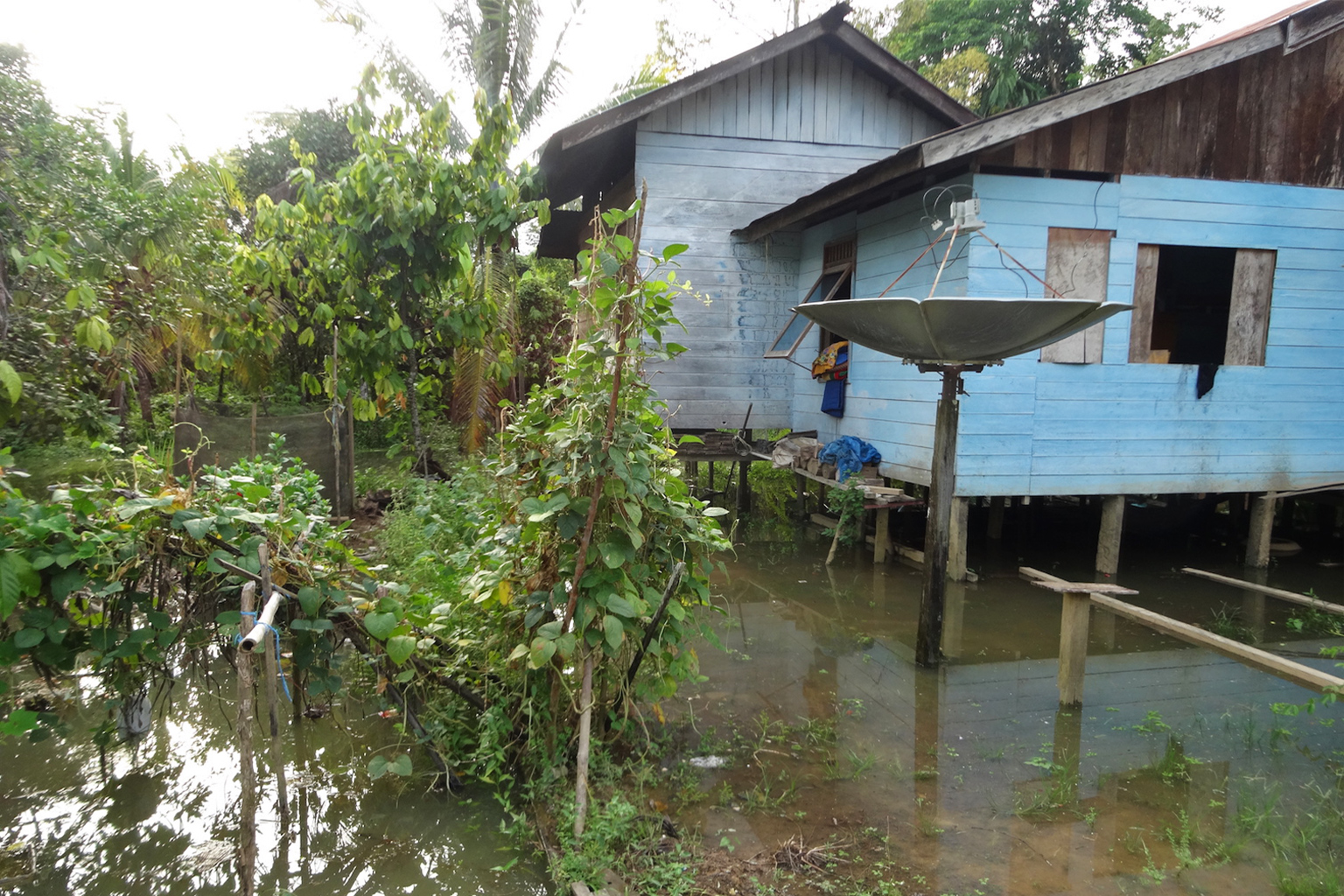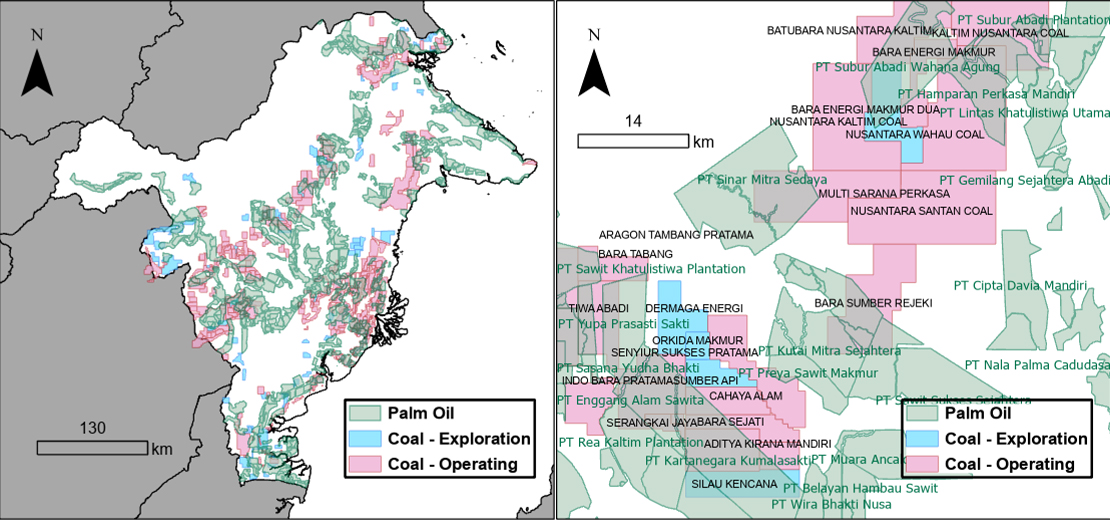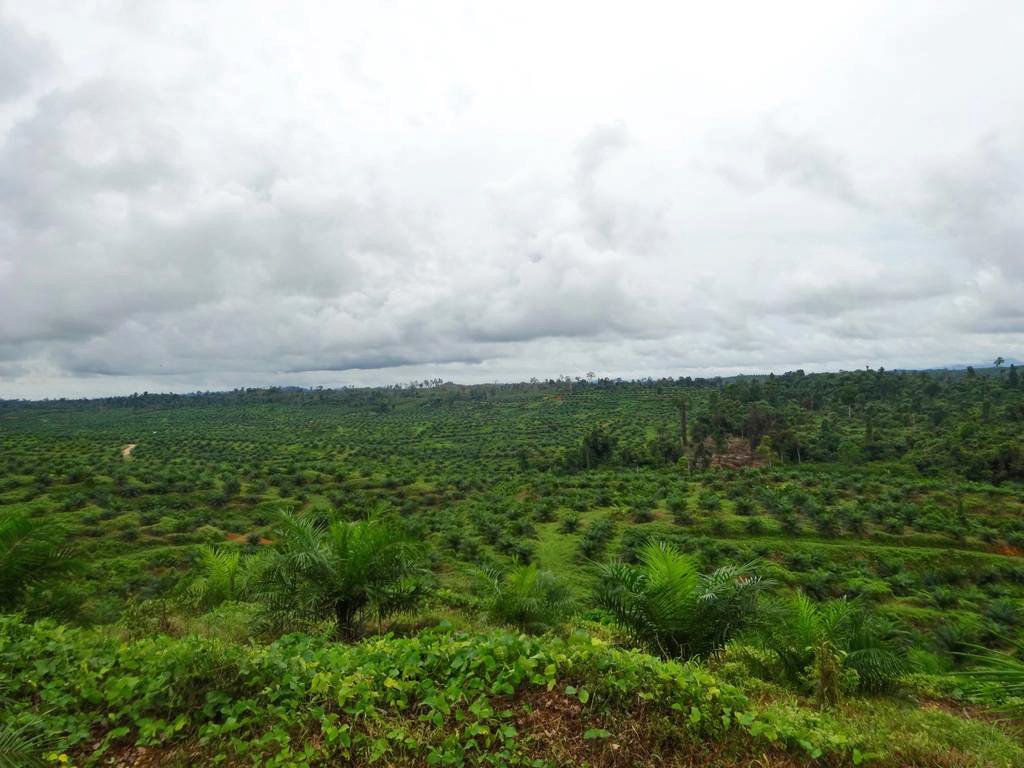

- Much of the landscape of Indonesia’s East Kalimantan province has been transformed, its formerly vast forests razed for logging, monocrop agriculture and open-cast coal mining.
- A recently published study analyzes how waves of extractive industries have affected the inhabitants of one village in the province
- The cumulative impacts of these industries were found to be severe, but also to vary depending on multiple factors including ethnicity, gender, wealth and age. Women, young people and recently arrived migrants were found to be disproportionately affected.
Industrial logging, rubber, oil palm, then coal. The snowballing effects of these extractive industries have divided local communities and destroyed livelihoods in parts of Indonesian Borneo, a new study finds.
“Communities who have had their land ‘grabbed’ by previous phases of industrial land use will experience the cumulative impacts of intensified extraction without necessarily deriving benefits,” lead author, Tessa Toumbourou of the University of Melbourne, told Mongabay.
Like a reverse evolution, some of the landscape of East Kalimantan province has already been transformed from the thriving ecology of primary forest to bare rock, passing through logging and monocrops, to open-cast coal mining. Most of the region falls somewhere along that trajectory, with just fifteen percent still under intact primary forest.
The study looked at the pseudonymous village of “Hongoi,” combining literature review, local mapping projects, government information on land concessions and interviews with local people. It found that once land is released for one form of industrial extraction, deals are struck between companies and the government for successive permits. Locals rarely get a look in, but have to handle the damaging knock-on effects on a daily basis, seeing their own landholdings assailed by pests, floods and fire as industrial logging, plantations and mining degrade the ecosystem they inhabit.
The ongoing extra pressure on landscape dependent rural life is laying bare inequalities and sharpening cultural and social divides that disproportionately affect women, cultural minorities, newcomers and the young, Toumbourou says.
Corroborating previous research in other regions, the study “reflects the facts on the ground well enough,” Thomas Reuter, professor of anthropology at The Asia Institute, University of Melbourne told Mongabay. “When we visited the province of East Kalimantan in Borneo, we saw widespread devastation of the region’s tropical rainforest.”

Jump-started under Crony capitalism
Under former President Suharto’s New Order government, more than 75% of Indonesia was designated “State Forest.” Vast concessions were handed out for large-scale, mechanized logging. Hongoi was no exception: In 1972, two timber tycoons were granted rights to log 465 square miles (more than 120,000 hectares), an area as big as the city of Rome, across the eastern end of the village’s land.
For villagers this heralded a dawn of industrialized extraction on their doorstep. It came devoid of consideration of their rights.
Starting in 2007, the study notes at least seven further large-scale concessions were granted in the area, amounting to a San Diego sized 201,574 hectares (498,100 acres) of oil palm plantation surrounding Hongoi. In 2010 the first permits for open cast coal mining came into play. Current coal concessions measure 50,313 hectares (124,326 acres), much of which overlaps existing plantation concessions.
“Open cast mines pock the landscape,” Toumbourou said. Vast expanses of bare grey-brown earth eat canker-like into the green of both the forest and older oil palm plantations in the wider region. Coal extraction is more profitable than the lessened productivity of older plantations. It is also easier to clear sparse rows of trees than healthy forest to reach the coal beneath. This has meant plantation concessions often pave the way for mining permits.
For now, mining concessions in Hongoi have been “land banked” – not yet exploited as mines – but it is only a matter of time Toumbourou cautioned: In 2021 mining companies arrived to expand the access road to their base camp.
The Indonesian Ministry of Environment and Forestry did not respond to Mongabay’s requests for comment on challenges inherent to the social and environmental impacts of land use policy in East Kalimantan.


How did it play out on the ground?
Intensive logging caused the typically moist forest to dry out, leaving “a combustible landscape prone to repeat fire damage” the paper says. Crops and homesteads now face annual fire risk.
Cocoa, an important cash crop many locals rely on for income, can’t withstand rapid cycles of scorched then saturated roots, or the pest problems that arrived with industrial oil palm.
One farmer with a 3-hectare cocoa plot told Toumbourou he’d lost 70% of his yield, “Since there’s been palm oil, cocoa has reduced in quality… The fruit is dry and eaten by disease. What yield we do get is eaten by rats and squirrels. Pests came with palm oil companies,” Toumbourou recalls him saying.
Upstream plantations have changed the flow rate and polluted the Kelinjau river that some villagers use to bathe in and drink from. And destruction of forest habitat has lead animals to seek food elsewhere – often eating smallholders’ crops instead of diminished wild foods—as well as reducing availability of forest products some locals relied on for income.
These massive landscape changes led to food and livelihood insecurity the study says. But the changes were not necessarily felt evenly.

The researchers focused on three different groups present in Hongoi: The Dayak Modang, a minority Indigenous people with roots in the region who settled in the village in 1941; Bugis pioneers, who began migrating from Sulawesi island in the 1970s; and “new Bugis” who arrived in the 2000s.
They found that the Modang and the Bugis pioneers, who had established landholdings prior to the intensification of industrial logging and agriculture, were better able to withstand the changes than the new Bugis, who remain trapped in a cycle of prospectless poverty without wealth or land of their own to cushion them from the impacts of plantations and mining.
Women were also found to have been particularly affected, losing social influence due to government policies that now require land to be registered under the male head of household for ownership to be recognised.
Prospects for younger generations have shrunk to dependency on low paid plantation work. And farming families without a financial cushion now face raw exposure to increasingly frequent crop failure.

Divided we fall
As people double down on protecting what they can of their own dwindling livelihood prospects, “processes that sharpen inequalities between and across people of different social groups” have been set in motion, Toumbourou said.
NGOs have aided Indigenous peoples across Indonesia to leverage ethnic markers to resist industrial destruction of their landscape. They have worked with Modang groups to support resistance, including facilitating forest mapping and issuing Adat (customary) fines to companies that cut down trees or trespass without Adat approval.
However, in Hongoi and elsewhere, migrants like the Bugis are not included even if they have lived in the region for decades. This, the study argues, scuppers potential for unified resistance to the negative effects of industrial extraction.
“Any advocacy in favour of the discriminated and oppressed can be criticised for sharpening social divides,” Marcus Colchester, senior policy advisor with the Forest Peoples Programme, a UK and Netherlands based NGO working to secure rights for Indigenous peoples, including those in East Kalimantan, told Mongabay. “But social reforms to uphold Indigenous peoples’ rights are long overdue.”

Is it fixable?
When local people are cut out of profits and decision making, the process of extraction can catalyze a vicious spiral that eventually maintains itself: The more extractive companies degrade the landscape, the tighter local livelihoods are squeezed, the greater social divides become, the weaker grows potential for resistance, the more locals release more land to survive, the less survival is possible.
“All are impacted by the effects of industrial palm oil,” Toumbourou said. But recognising that not all are impacted equally by extractive industry is important.
“How and why historical processes of extractivism and land accumulation work…can provide deeper insights into how social differentiation and livelihood insecurity unfolds” the paper says.
Toumbourou says she hopes a growing movement in the region to build stronger, cross-group alliances will better represent and help protect the livelihoods of all people subject to catastrophic land use change.
Banner image: Clearing a site with dynamite to access the vein of coal in East Kalimantan, Indonesia. Image by Cassidy K. / ILO via Flickr (CC BY-NC-ND 2.0).
Citations:
Toumbourou, T. D., Dressler, W. H., & Werner, T. T. (2022). Plantations enabling mines: Incremental industrial extraction, social differentiation and livelihood change in East Kalimantan, Indonesia. Land Use Policy, 119, 106157. https://doi.org/10.1016/j.landusepol.2022.106157
Source
Language of the news reported
Copyright © Fuente (mencionado anteriormente). Todos los derechos reservados. El Land Portal distribuye materiales sin el permiso del propietario de los derechos de autor basado en la doctrina del "uso justo" de los derechos de autor, lo que significa que publicamos artículos de noticias con fines informativos y no comerciales. Si usted es el propietario del artículo o informe y desea que se elimine, contáctenos a hello@landportal.info y eliminaremos la publicación de inmediato.
Varias noticias relacionadas con la gobernanza de la tierra se publican en el Land Portal cada día por los usuarios del Land Portal, de diversas fuentes, como organizaciones de noticias y otras instituciones e individuos, que representan una diversidad de posiciones en cada tema. El derecho de autor reside en la fuente del artículo; La Fundación Land Portal no tiene el derecho legal de editar o corregir el artículo, y la Fundación tampoco espalda sus contenidos. Para hacer correcciones o pedir permiso para volver a publicar u otro uso autorizado de este material, por favor comuníquese con el propietario de los derechos de autor.
